Building A Skills System Of Record: EdCast Releases Skills Studio
Given all the focus on SkillsTech, how will companies build a Skills System of Record? This has become one of the biggest topics in HR, and EdCast has just introduced Skills DNA, a family of tools to help make this possible.
Let me explain why this topic is so important. As most of you know, companies are accumulating and building skills databases all over the place. Every new recruiting tool (Eightfold, Avature, iCims) builds a skills taxonomy around job postings. Every learning tool (EdCast, Degreed, Cornerstone, Fuse, Docebo) builds a skills database to index, find, and recommend content. And all the talent marketplace platforms (Gloat, Hitch, Fuel50, and others) build skills databases to help match people to jobs and projects.
Where is all this going? Companies now have multiple Skills Taxonomies and none of them really match up. In fact if you start to think about this problem, every company has at least five sources of this information:
- The learning tools you have (LXP, LMS, LRS) that capture learning search, completion, and activity data
- The recruiting tool and all their providers (ATS system and integrations with Indeed, LinkedIn, and others)
- The third-party libraries (EMSI Burning Glass, NASSCOM, or other skills database you buy)
- The content providers (LinkedIn, Skillsoft, Udemy, Coursera) each of which have their own taxonomy
- Your internal capability models (your Sales capability model, your leadership models, and more)
It’s a very big issue. Many large companies have started a “Skills Taxonomy Project” and often believe they can aggregate all this data into Workday Skills Cloud, for example. Well, it’s a lot harder than it looks and new offerings from EdCast, Oracle, and many others are now here to help.
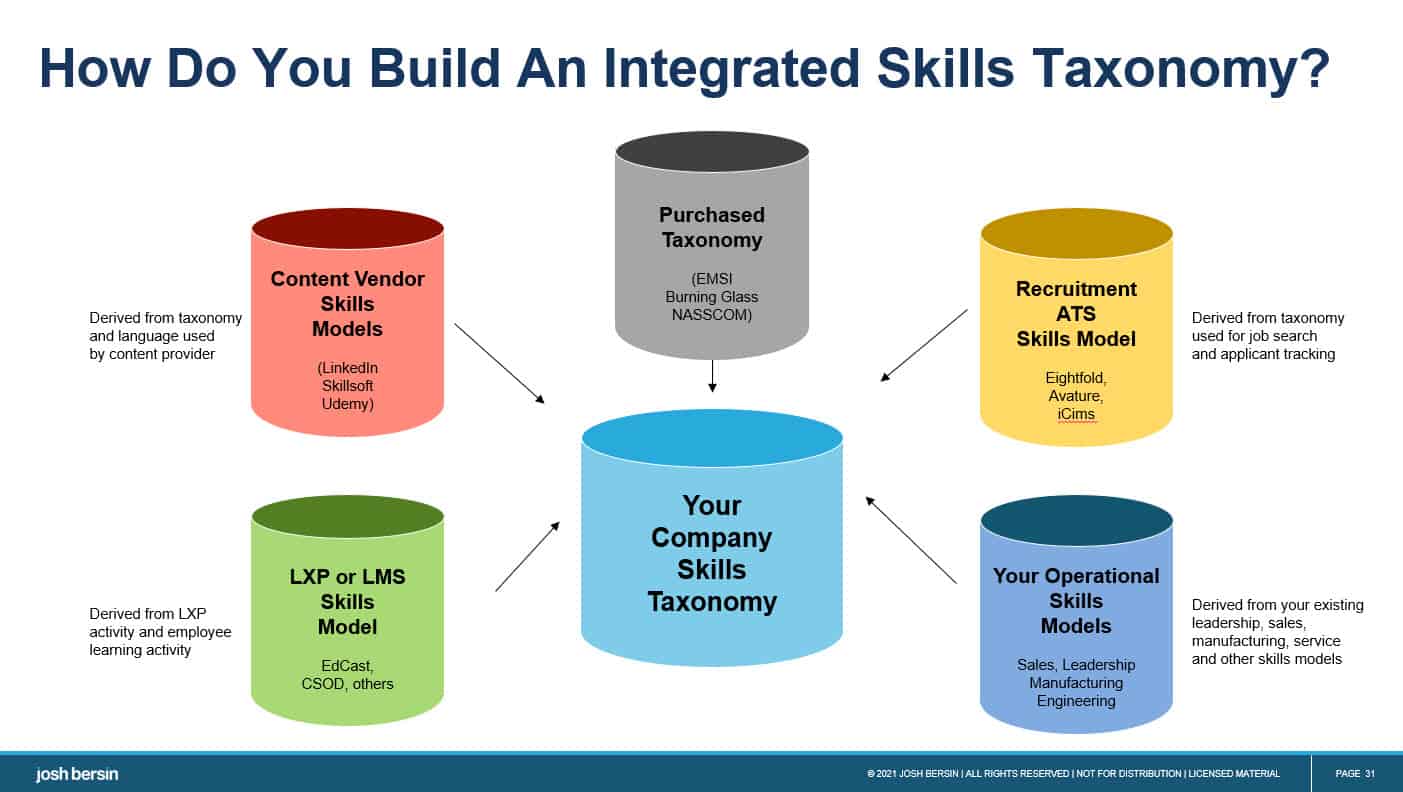 |
What can you do? Well, lots of startups like Techwolf.ai, Futurefit.ai, Retrain.ai, EmPath, Skyhive, and others are selling tools to help, but there is no leading vendor focused on this problem. (Workday and Oracle both intend to do this, but these solutions are still immature.)
Enter EdCast, the company best known for its LXP. EdCast acquired several AI companies over the last six years and found out that its biggest customers wanted to edit, curate, and integrate their skills taxonomies from many sources. So the company went out and built the EdCast Skills Studio, which I think is pretty cool.
Here’s what it is:
First, EdCast offers its Skills Graph, which is built on a graph database (an important new technology entering HR), that gives you an out-of-the-box skills architecture you can edit, modify, and import data into. This is an open model you can visualize, edit, and analyze (unlike most skills models which are “black boxes”).
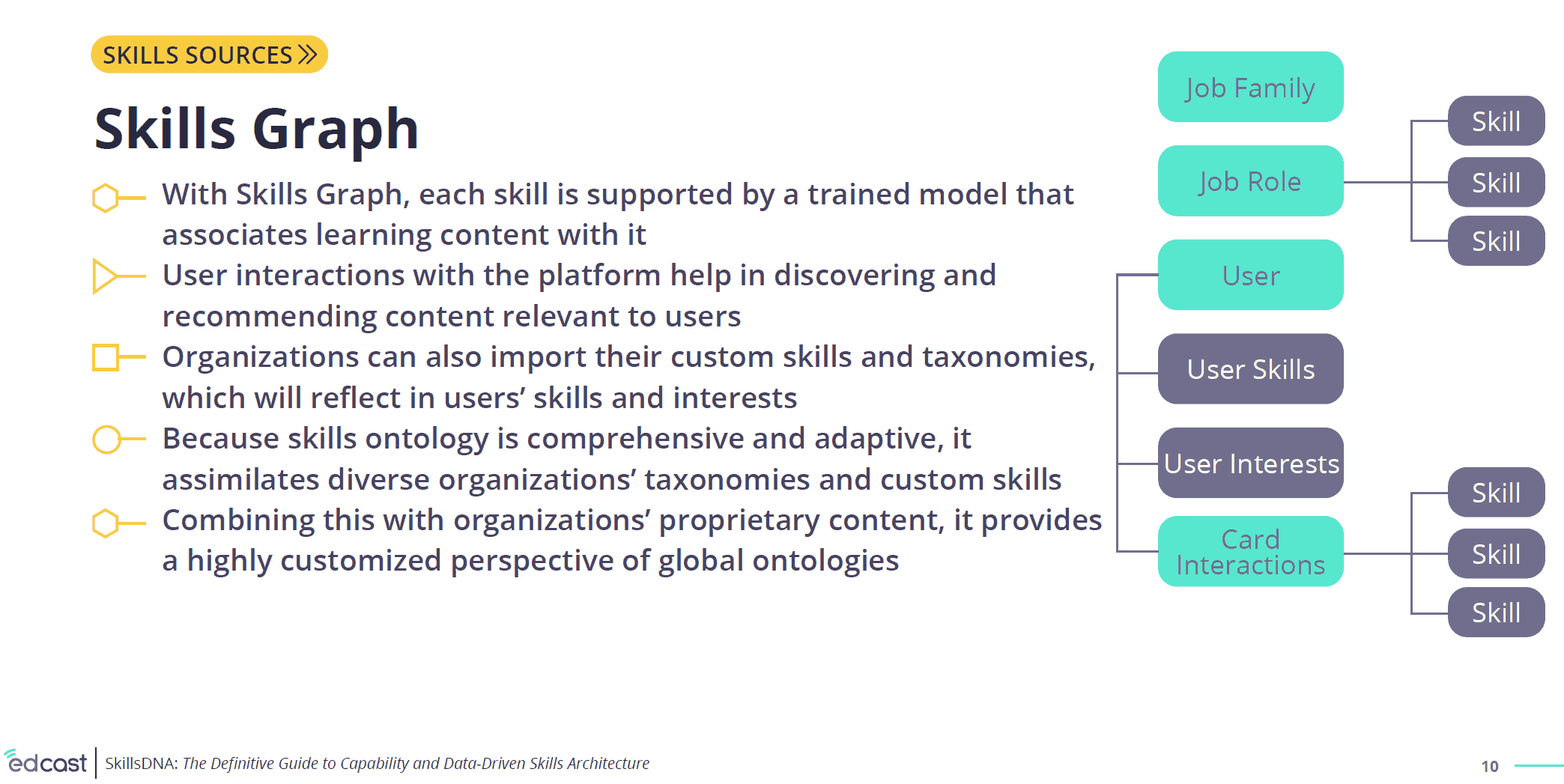 |
The Skills Engine within Skills Graph extracts skills from employee resumes, auto tags content, infers skills from documents and communications, and has an API to import skills. So you can modify and edit the skills taxonomy and then import whatever new skills data you’ve developed internally. When you import new skills or data, the Engine cleans the data and “trains” the graph to make it smarter.
I saw a demo of this tool, and EdCast has already created a map between EMSI and BurningGlass’s skills models. They are very different, but the tool almost immediately normalized the two.
The problem we all face is as follows: one system uses the word “collaboration” and another uses the word “communication” and another uses the phrase “teamwork.” These are very similar skills and they kind of overlap. Do you want to use all three? Or do you want to merge “collaboration” and “teamwork?” Or is one a parent of the other?
In EMSI, for example, the skill “Unix” is related to the skills “Unix Shell” in Burning Glass. If you don’t merge these you’ll have two different skills with almost the same meaning. EdCast’s system lets you merge skills, create hierarchies, or leave them as-is.
Second, EdCast has built Skills Studio, an AI-powered development tool that lets you view, edit, and manage skills and job hierarchy, edit and combine skills, and “train” each skill with real-world data. For example, at Novartis, the company wants a very specific skill for Neurosurgery because they need to build drugs and tools to help Neurosurgeons. Well, there are a lot of “sub-skills” required in Neurosurgery, so they’re using EdCast Skills Studio to curate this skill.
The tool does some interesting things. You can import content (maybe your company’s job description or a whitepaper) and tell it “this is a strong definition of this skill” and you can also “untrain” the database by importing something that is incorrect and saying “this is not a good definition of this skill.” This lets you avoid the same word being used incorrectly in your taxonomy. (Note the “up arrow” for train and “down arrow” for untrain.)
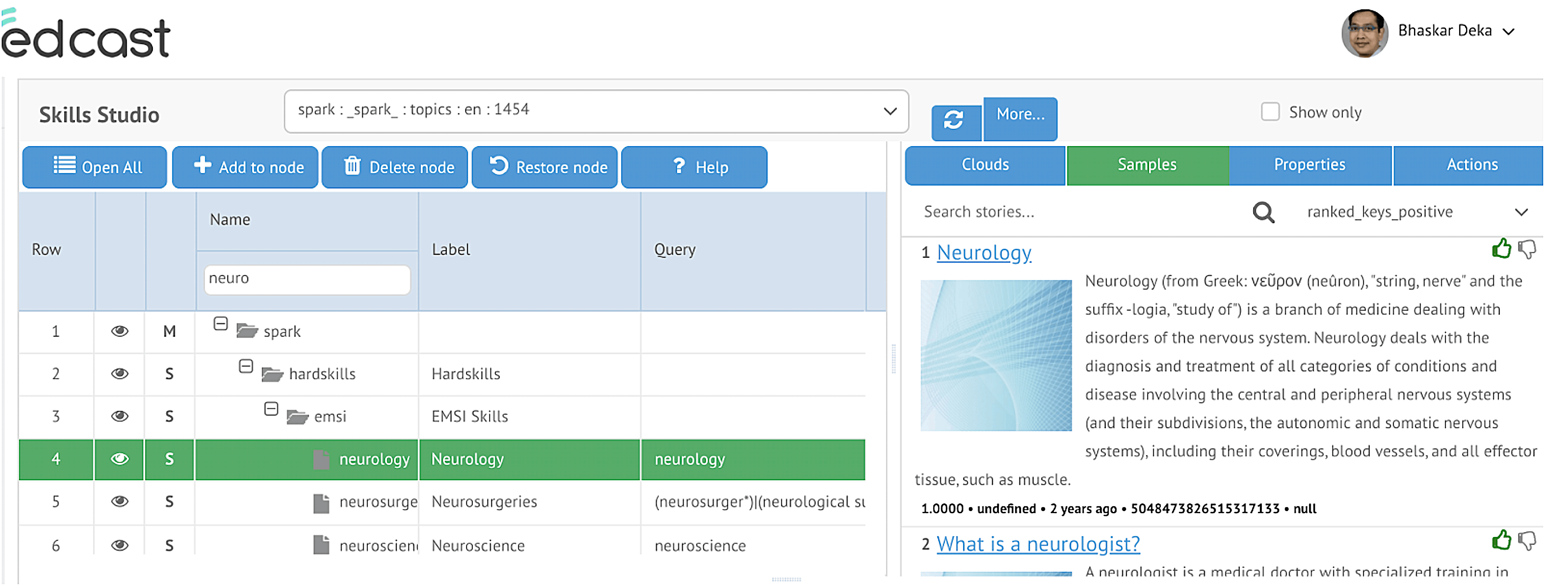 |
Here’s an example of what it looks like. As you can see it not only lets you design the skills model, it ranks the relative relationship of other skills.
 |
This type of tool can play a vital role in your L&D and overall talent strategy. Companies need this to create a “Skills System of Record.”
Third, EdCast has a variety of analytics and reporting tools to help you use the skills taxonomy. You are going to want to see what skills are related to others, identify what I call the “clusters of skills” among different people, and of course look at all sorts of analysis of individual skills by role, person, and project.
The company has a wide variety of ways to “infer” or “assess” skills (AI assessments, proctored assessment, Skills Exchange) and can also build what we call Capability Models. Taking a page from our Capability Academy and Global HR Capability Project, EdCast has put together a tool that lets you build your own “Capability Model” built up from all these skills.
You can see which skills seem to be similar, which skills are highly correlated with others, and you can see “skills clusters” that make up different jobs or roles. For example, in our Global HR Capability Project we identified 14 “Tribes of HR” which show you how different job roles in HR relate to each other. For example, here is a graph that shows how sales skills, sales qualification, and various other sales-related skills relate. While it’s not labeled, you can mouse over each skill and see it’s adjacency to others.
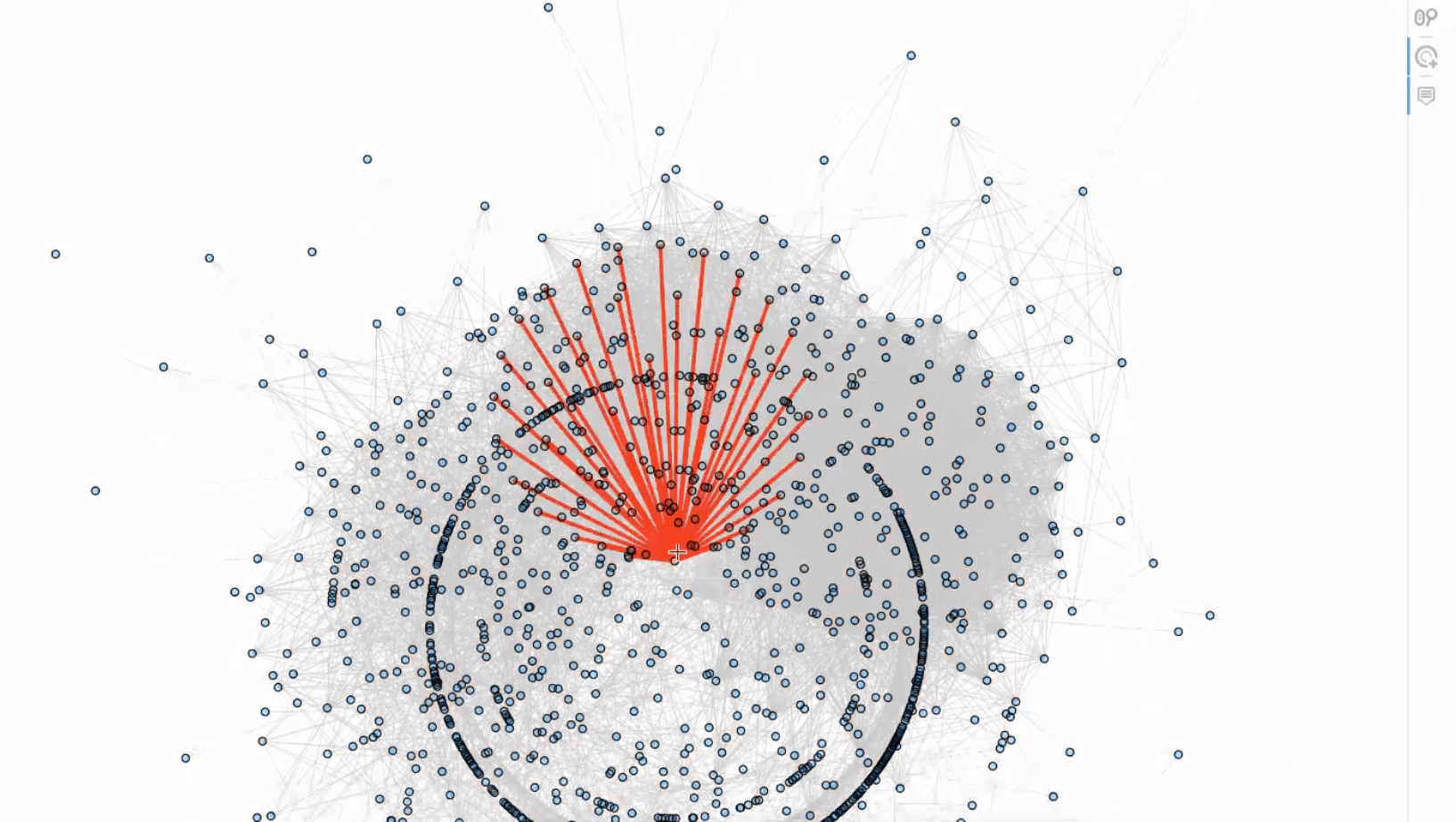 |
We actually did this by hand.
We used EMSI data and Tableau to map more than 300,000 HR positions and their relevant skills as shown below. Using statistical clustering we found 14 “tribes” of HR. This tribal map, which we call The Anthropology of HR, lets us show companies the development roadmaps and job assignments to help HR people improve their skills. (Please contact us if you’d like to do this in your company). EdCast’s toolset could do this out of the box.
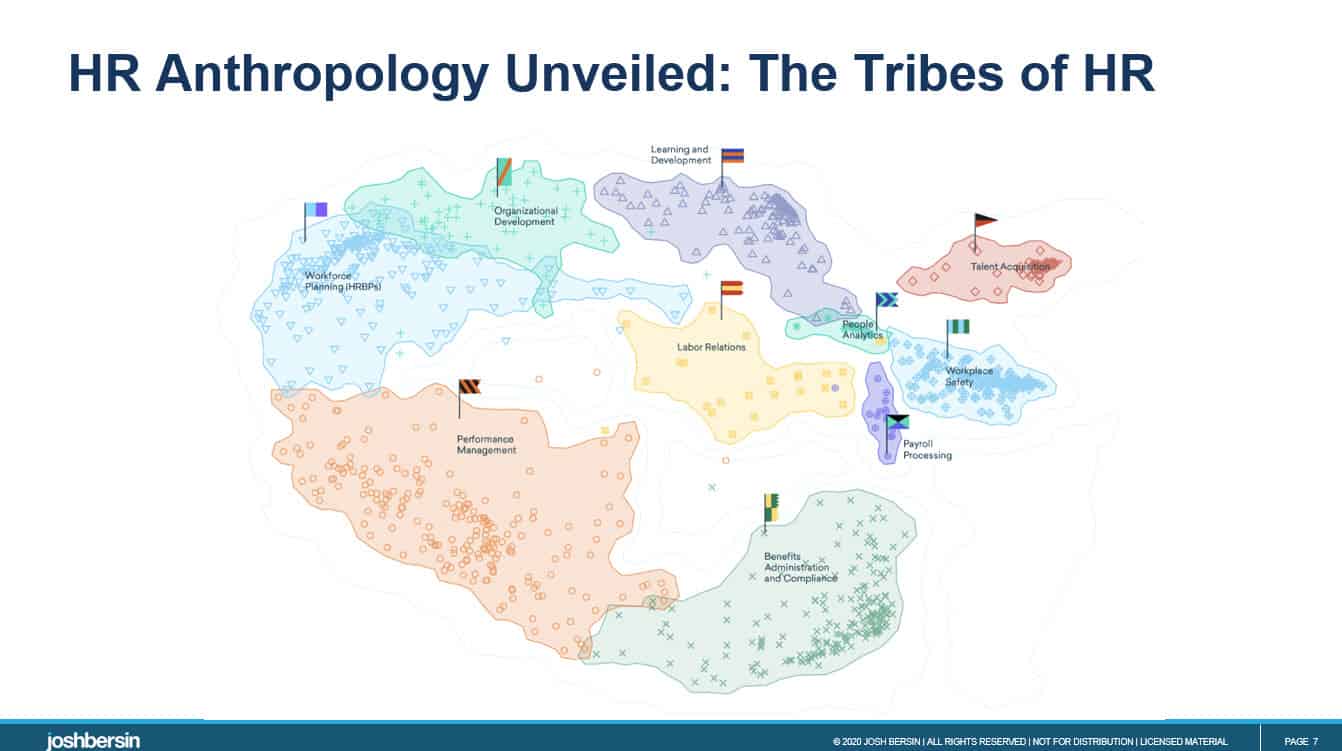 |
Novartis Perspectives
Several EdCast customers are now working on this and I recently talked with Marc Ramos, who leads this work at Novartis. Novartis has Workday (HCM), Gloat (Talent Marketplace), and EdCast (LXP). The company badly needs to harmonize its skills libraries for its science, manufacturing, professional, and operational jobs.
Marc believes “this level of detail and relevance will allow us to gain a heat map view of skills in development, gaps being filled, and business risks to mitigate in a real-time view.” In other words, he and his team see this as highly strategic to the business. He also commented that there is too much “skills noise” in the current systems. Words like “engineering” and “Java” are used in different ways, eventually becoming meaningless.
HNovartis has a team using the EdCast Skills Studio to “train” and “untrain” the taxonomy so each word of skill means precisely what Novartis wants it to mean. This, by the way, is what Microsoft Viva Topics does for documents and business processes. It monitors activity and continuously improves it’s “topic index” engine.
It’s Time To Think About Your Skills System Of Record
I’m a big fan of what EdCast is doing. I’d encourage other vendors to move in this direction, and please call us if you need help in this ever-important area of HR Technology.
Additional Resources
BurningGlass Acquires Emsi: The Leader In Skills And Jobs Data?
Guess Who Joined The Skills Cloud Market? Oracle and They’re Serious.


